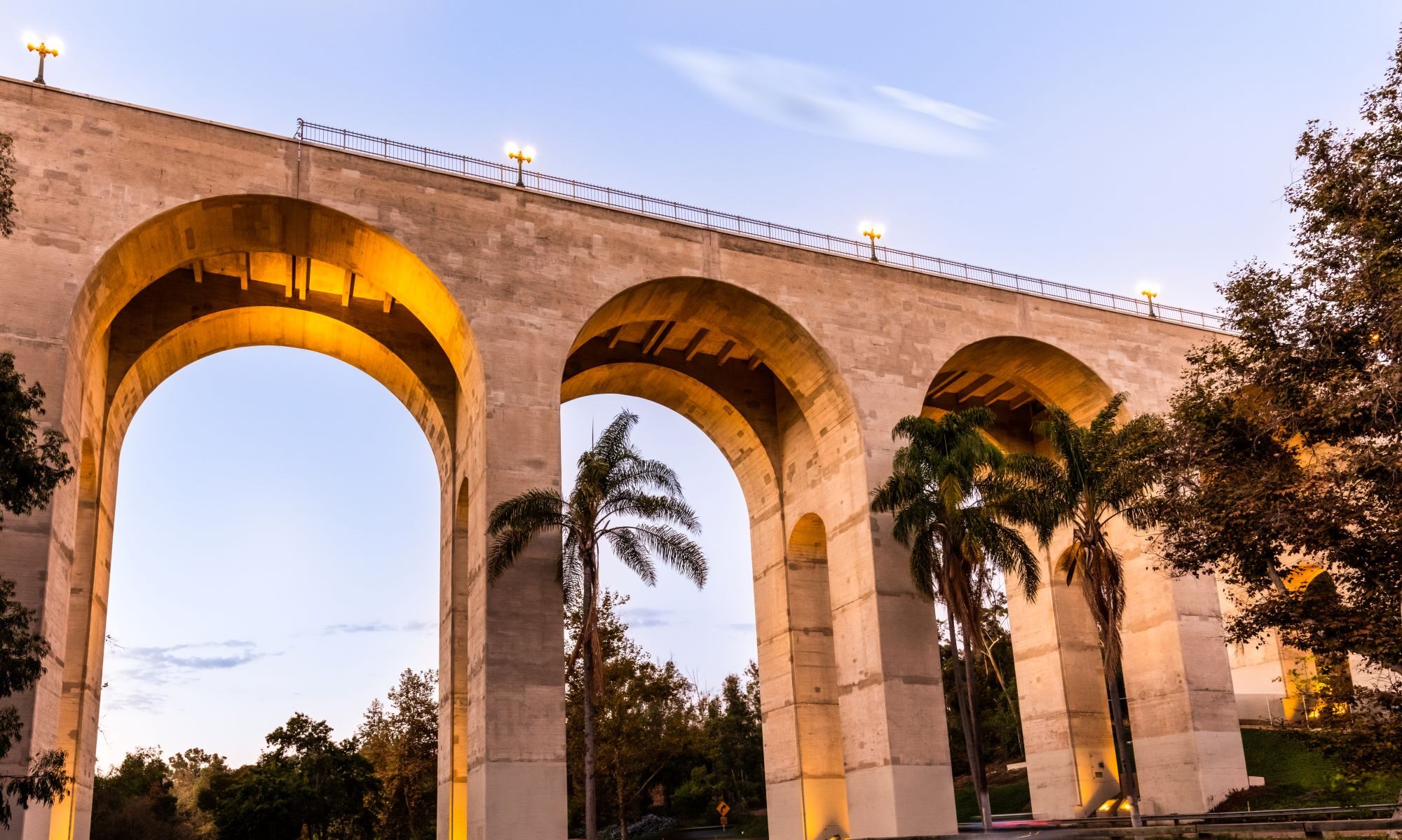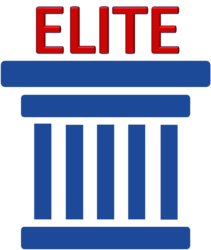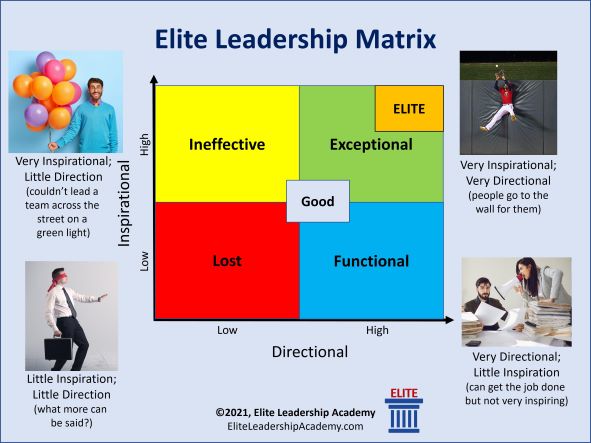A critical component of our leadership definition is that leaders must “…direct and inspire a team or organization to reach a goal or follow a vision…”. They must be able to provide direction AND inspiration. They have to direct them by defining the goal or articulating the vision as well as inspire them to do whatever is necessary to reach the goal.
Visualizing this on a 2 by 2 matrix with Directional and Inspirational dimensions, leaders who are low in both Directional and Inspirational would be considered ‘Lost’ as they are not providing in form of leadership. Equally as poor are the leaders who are low on Directional but high on Inspirational. These leaders can make their followers feel good, but they provide little direction or focus on the tasks at hand. They would be categorized as ‘Ineffective.’
Leaders who are high on Directional, but are low on Inspirational, would be in the ‘Functional’ quadrant. They can get the job done in spite of their followers not being very inspired by them.
Leaders who are high on both Directional and Inspirational would be in the ‘Exceptional’ quadrant. These are typically the most effective leaders.
Subdividing the quadrants a bit further identifies the ‘Good’ leaders who are highly Directional but are average Inspirational. They are typically a bit more effective than just ‘Functional’ leaders.
‘Elite’ leaders are highly Directional and Inspirational. Their followers understand what must be done and are inspired to do whatever is needed to complete the tasks. These are the best of the ‘Exceptional’ leaders. Some of the characteristics of an Elite Leader include:
- A thorough understanding of the situational influences that impact leading their followers and their environment;
- An abundance of the innate leadership qualities of humility, empathy, vision and risk-taking;
- A clear leadership vision that is articulated and embraced throughout the organization they lead;
- Mastery of several leadership tools, including communication, social media and storytelling;
- A regular self-reflection strategy;
- Active coaching and mentor relationships;
- A thirst for continuous leadership learning.
Elite Leaders represent those operating at the highest leadership level. Their organizations are usually very highly thought of and their people love working for them. We may not all become an Elite Leader, but it is a goal we should all aspire to because even if you fall short, you could still be an exceptional leader.
How would you categorize leaders you have known? Tell us about them in comments below, especially the elite ones (no names please).



